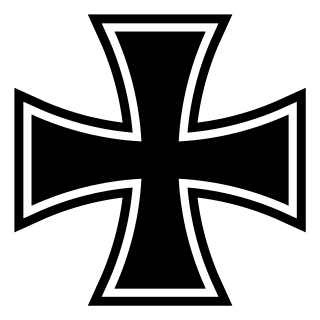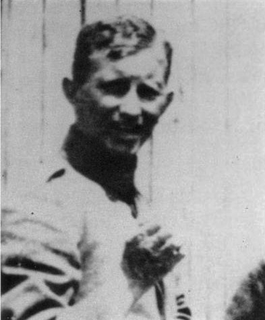 W
WThe Iron Cross was a military decoration in the Kingdom of Prussia, and later in the German Empire (1871–1918) and Nazi Germany (1933–1945). King Frederick William III of Prussia established it on 17 March 1813 during the Napoleonic Wars. The award was backdated to the birthday of his late wife, Queen Louise. Louise was the first person to receive this decoration (posthumously). The recommissioned Iron Cross was also awarded during the Franco-Prussian War, World War I, and World War II. The Iron Cross awarded during World War II has a swastika in the center. The Iron Cross was usually a military decoration only, though there were instances awarded to civilians for performing military functions, such as Hanna Reitsch, who received the Iron Cross 2nd Class and Iron Cross 1st Class, and Melitta Schenk Gräfin von Stauffenberg, who received the Iron Cross, 2nd Class, for being civilian test pilots during World War II.
 W
WConstantin de Grimm also known as Baron de Grimm, was a Russian illustrator known internationally for his caricatures in publications such as the Vanity Fair, Kladderadatsch (Germany), The Evening Telegram (US), and the German edition of Puck, of which he was founder. He served multiple times as president of the German Press Club. Born at the Winter Palace in Saint Petersburg, where his father taught the children of Czar Nicholas I, he relocated to Berlin in 1860, and later to Leipzig, where he contributed drawings to Daheim. He served in the German Army from 1867 to 1873 and received the Iron Cross for bravery during the Franco-Prussian War. He then returned to cartooning, becoming assistant editor of Kladderadatsch in 1873, founding the German edition of Puck in 1874, and–after a year of art instruction at École des Beaux-Arts in Paris–became a journalist and drama critic. He came to the United States in 1884 after attracting the notice of James Gordon Bennett, publisher of the New York Herald, and became known to American readers through art in the Herald and Evening Telegram. He died in New York City in 1896 at the age of 50.
 W
WOnni Palaste, born Onni Bovellan was a Finnish Winter War veteran and writer.
 W
WColonel Mohammad Taqi-Khan Pessian, also spelled as Pesyan and Pesseyan, was an Iranian gendarme and pilot who formed and lead the short-lived Autonomous Government of Khorasan. He was killed in a battle with forces sent by Ahmad Qavam, the prime minister at the time.
 W
WMiguel Piernavieja del Pozo was a Spanish spy for Nazi Germany, operating in Britain during the Second World War. He was quickly spotted by the Security Services (MI5) who gave him the codename Pogo and used one of their double-agents to feed him disinformation which was relayed to the Germans.
 W
WWolfgang Johannes, Ritter von Weisl, Hebrew: בנימין זאב (וולפגנג) פון וייזל (וייסל) was one of the founders of the Revisionist movement and a leader in the Zionist struggle for establishing a Jewish state. He was writer and a journalist, a physician and medical researcher, a military man and an original military strategist, an Austrian noble and a world expert in Islam.
 W
WGeorg Zeumer was a German World War I fighter pilot known primarily as the man who taught the Red Baron to fly. Zeumer served in the famed Jasta Boelcke, which produced a number of German World War I aces. He shot down four confirmed planes before dying in combat in 1917.